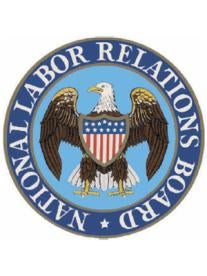On April 24, 2017 President Trump designated Philip Miscimarra as Chairman of the National Labor Relations Board (NLRB or Board). The move follows the President’s late January designation of Board Member Miscimarra as Acting Chairman.
A Republican Chair
Miscimarra, a management-side labor lawyer and a Republican, was nominated to serve on the Board by then President Obama in 2013 and was confirmed by the Senate for a four year term that continues through December 16, 2017. President Trump can nominate Chairman Miscimarra for another term if he should wish to do so. While Board Members are subject to Senate confirmation, the President may, in his discretion, designate a Member of the NLRB to serve as Chair at his pleasure.
Two Vacancies Remain On the NLRB
The Board is composed of five Members and at this time two of the seats on the Board are vacant. The vacant seats are reserved for Republicans. The Board is generally composed of three Members of the President’s party and two from the other party. Board Members Mark Pearce and Lauren McFerran are both Democrats.
What Is Likely To Change With a New Majority
Notably, Chairman Miscimarra, through a series of dissenting opinions taking issue with decisions of the Obama Board’s Democratic majority has offered a significant overview of issues as to which, once there is a new Republican majority on the NLRB, employers, unions and other advocates can expect the Board to likely move, as cases presenting the issues come before it for decision. These include such issues as the NLRB’s test for determining whether joint employer relationships exist, the standards for evaluating whether handbooks and work rules interfere with employees’ rights under the National Labor Relations Act (NLRA), appropriate units for collective bargaining, the question of whether graduate students and research assistants are employees under the NLRA with the right to collective bargaining and a host of other decisions from the past eight years that more expansively interpreted the NLRA.
Election Rules and Procedures
Also notable is the fact that Chairman Miscimarra was a dissenter when the Board adopted its Amended Representation Election Rules that took effect in May 2015. Those rules, often referred to as the “ambush” or ”quickie” election rules that have not only cut the time between the filing of a representation petition and a vote from an average of 40-45 days to approximately 25 days. Since the Amended Rules took effect, Mr. Miscimarra has pointed out that they have placed an undue priority on speed, compromising the rights of employees to make informed decisions when they vote and the right of employers to meaningfully communicate with employees before an election.
Because the Amended Rules were adopted under the Board’s rulemaking authority, any further revisions in the election rules must also be made either through the same lengthy process or by Congress through legislation. For the Board to do so will require a new majority that agrees that change is needed. While various sources have suggested that the new administration is considering who it will nominate for the vacant seats on the Board, only time will tell when the President will submit his nominations and the Senate will consider them.




 i
i


